|
|
Venice Guide to Places of Interest in Venice |
 
|
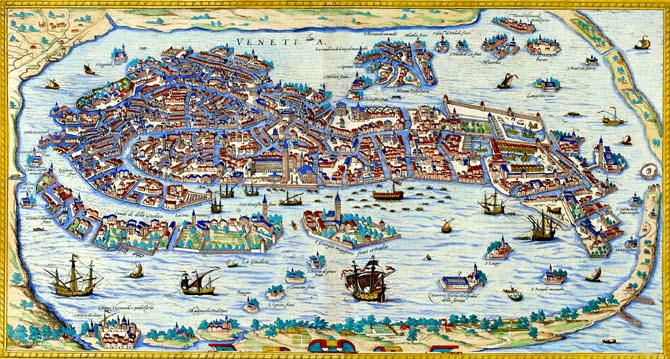
Venice 1572 - Braun and Hogenberg Civitates Orbis Terrarum. Courtesy of http://historic-cities.huji.ac.il/
This Guide to the places of Interest in Venice offers basical notes about some of the major Venice Monuments and attractions.
Each place is located on a detailed map of its area. The maps also show the nearest restaurants, waterbus stops and the location of others places of Interest in the surrounding of the choosen Venice Monument.
|
VENICE HOTELS
GUIDE |
|
|
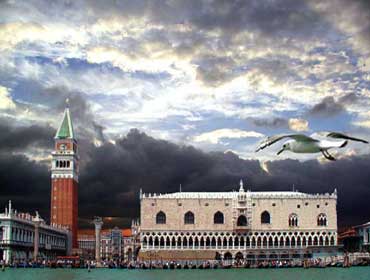
|
St. Mark's Square
The Piazza San Marco (or Saint Marks Square) is probably the most famous place of Venice. From the medieval age it has always been treated as the centre of Venice.
It was the location of all the important offices of the Venetian state, and has been the seat of the Archibishop since the 19th century. It was also the focus for many of Venice's festivals...
|
Accademia Gallery
The Accademia Gallery is the Art Museum of Venice.
It has one of the worlds greatest collection of masterpieces of Venetian painting up to the 18th century.
The collection is generally arranged chronologically though some thematic displays are also evident.
It was founded in 1784 by the grand duke Pietro Leopoldo...
|
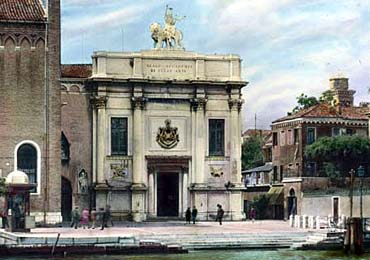
|
|
|
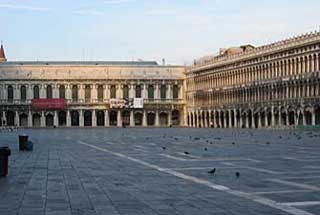
|
Correr Museum
This building was built between 1806-1814 during the Napoleonic era when Venice was part of the Kingdom of Italy (1806-1814) and stepson of Napoleon, Eugene de Beauharnais, was Viceroy.
The Venetian painter Giuseppe Borsato worked on the decoration of the interiors, producing a personal and very careful interpretation of the Empire style.
The Correr Museum takes its name from Teodoro Correr (1750-1830), a passionate art collector who was a member of an old family of the Venetian aristocracy...
|
Rialto Bridge
Ponte di Rialto or Rialto Bridge is considered as one of the main attraction of Venice. It is the oldest bridge across the Grand Canal.
At the time of the development of Venice, there was no bridge between the two sides of Grand Canal. This was a big problem for the Establishment.
To solve this problem, a pontoon bridge built in 1181 by Nicolò Barattieri...
|
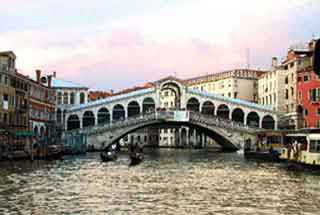
|
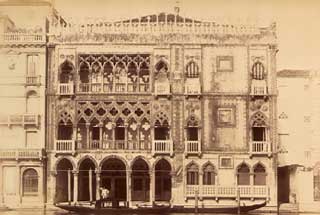
|
Ca' d'Oro
Ca' d'Oro (correctly Palazzo Santa Sofia) is one of the older and most beautiful palaces on the Grand Canal in Venice.
It has been known as Ca' d'Oro (golden house) due to the gilt and polychrome external decorations which once adorned its walls.
The Palazzo was built between 1428 and 1430 for the Contarini family, who provided Venice with eight Doges between 1043 and 1676...
|
Salute Church
In the first half of the 17th century a terrible plague broke out in Northern Italy. The Doge of Venice took preventive measures to stop infection in Venice.
But the all the efforts went into vein and the disease was spreading into the city. In a very short time, in spite of the restrictions set by the authorities, the population was decimated. The Doge and most of his family perished.
The failure of every medicine and prophylactic then known drove the government and people to look to religion to save them...
The Festival of the Madonna of the Salute
|
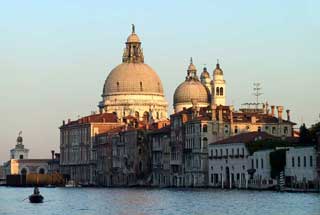
|
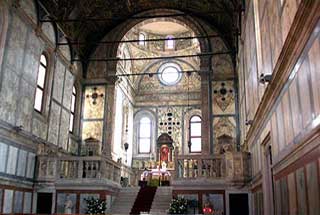
|
Miracoli Church
Santa Maria dei Miracoli, also known as the Marble Church, is located in the Sestiere of Cannaregio, in Venice.
The church is one of the best examples of the Venetian Renaissance including colored marble, a false colonnade on the exterior walls, and a semicircular pediment.
Built between 1481 and 1489 by Pietro Lombardo to house a miraculous icon of the Virgin Mary.
In Venice, the state generally paid for the construction of churches, but the funds for the construction of Miracoli came from local citizens and devotees of the miraculous image...
|
La Fenice Theatre
La Fenice Theatre (Teatro La Fenice) appeared right from the start as the official theatre of the Venetian aristocracy.
On 1st November 1789 a competition was announced to construct the Fenice Theatre.
After long debate on nomination, Giannantonio Selva was selected to build the theatre. The theatre, with exemplary rapidity, was completed in April 1792...
The "La Fenice" Arson in 1996
|
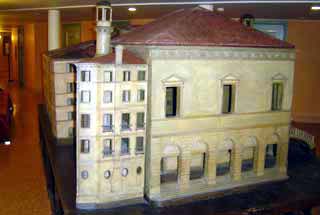
|
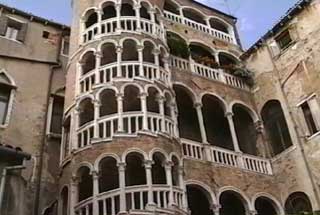
|
Scala Contarini del Bovolo
The Scala Contarini del Bovolo (also called Palazzo Contarini Minelli dal Bovolo) is a small palace in Venice. It is hidden away in an obscure little alley known as the Calle della Vida, near the Campo Manin, and was the palace of Contarini family.
The original structure was designed by Giovanni Candi in 1499. The main attraction of this palace is an elegant spiral staircase with a plethora of arches.
The family hired a second architect, Giorgio Spavento, to add the staircase to the original structure...
|
|
|
Venice Arsenal
The Venetian Arsenal (Arsenale di Venezia) is one of the most important place in Venice.
It was a shipyard and naval depot that played a leading role in flourishing Venetian Empire.
According to the myth, from the 8th century Venice had shipyards, that were scattered throughout the city. But in the early 12th century these spreaded shipyards became a menace of fires and in 1104...
|
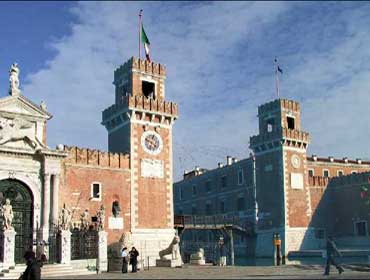
|
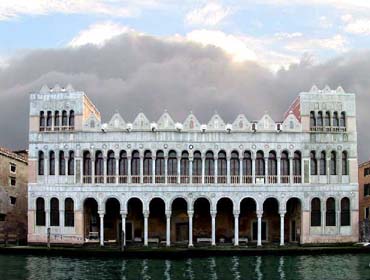
|
Fondaco dei Turchi
This heritage building is one of the oldest building in Venice. In the early part of the thirteenth century, Giacomo Palmieri, a rich nobleman of Pesaro sought refuge in venice.
In 1225 he built this building for his personal use.
In 1381, Republic of Venice took the control of this building, and used the palace as the court of Duke of Ferrara, Nicholas II...
|
|
Ca' Mocenigo
From the 17th Century, this palace was the residence of the San Stae branch of the Mocenigo family. Mocenigo family is one of the most important families of the Venice.
Seven members of this famous family became doges between 1414 and 1778.
This large building was originally built in a gothic style but it was extensively rebuilt at the beginning of the 17th century and got its present appearance.
Several famous personalities of yesteryear, like Lord Byron, Thomas Moore, Lady Mary Wortley Montague, etc. stayed here as guests...
|
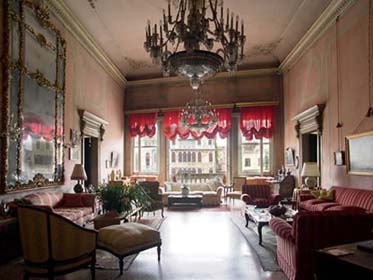
|
|